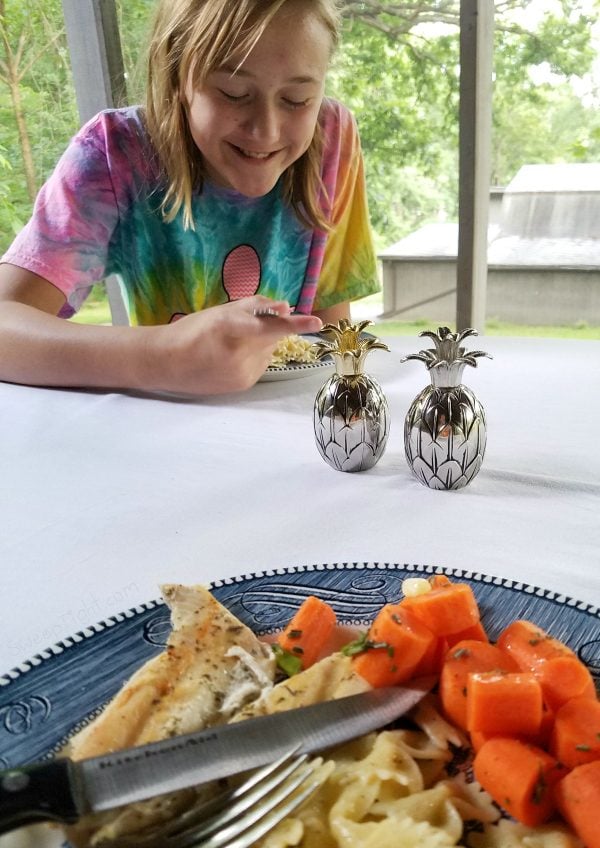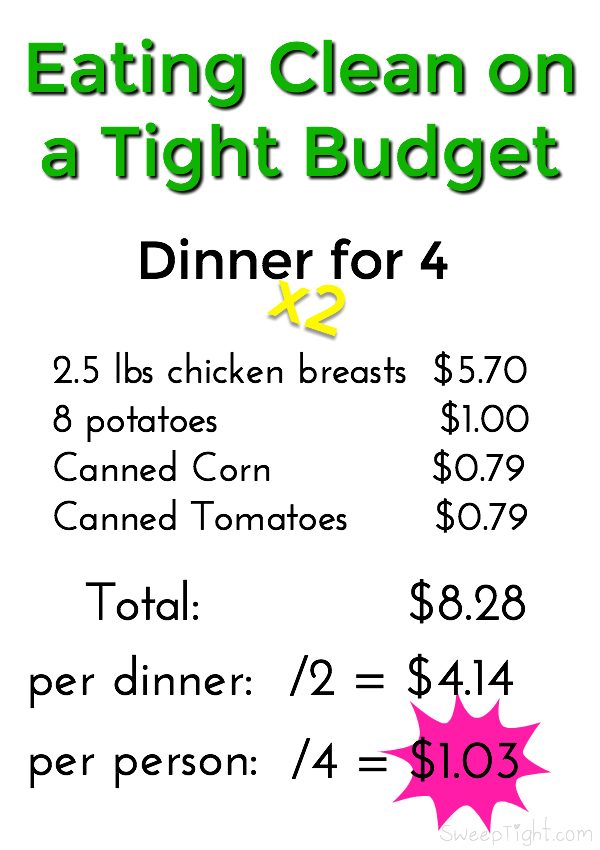Food Desert Challenge – Eating Clean on a Tight Budget
Food deserts are discussed in depth when you study nutrition science in college–which I did. It’s one thing to talk about what they are, but it’s a whole other thing to immerse yourself in one. And eating clean on a tight budget might be the hardest part of all. This post was sponsored by Y-USA as part of an Influencer Activation for Influence Central.

Eating Clean on a Tight Budget
What is a food desert?
Food deserts can be created when one or multiple factors make it difficult or impossible to provide adequate food for yourself and family. Money, geography, and motility are the major contributors to creating the conditions needed for a food desert.
If you live in a rural area without access to a grocery store, it may be quite complicated to get food each day–especially if you don’t have sufficient transportation.
Or, perhaps you live in a major city where grocers are just a short walk down the block. But without enough income to afford the staples, you find yourself in a desert surrounded by a tortuous oasis of inaccessible nourishment.
Many families rely on the school meal programs to offset their already taxed grocery bill. When summer breaks, so do a lot of budgets. As part of YMCA’s commitment to keeping kids healthy, the Y’s Summer Food Program provides kids with the opportunity to receive nutritious meals and snacks, while enjoying recreational and learning activities to keep their minds and bodies active.
Thanks to support from the Walmart Foundation, the Y will provide 5 million meals and snacks to 250,000 kids and teens at 1,500 locations.

The Food Desert Challenge
In an effort to drive more support and awareness of this great program, the Y created the Food Desert Challenge. Aiming to elevate the public discussion of year-round child hunger and how the Y addresses the issue, anyone can take the challenge.
To take the challenge, assign a budget of just $5 a day per person for food. We did this for an entire week. We also took on another challenge–to make sure everything we ate was clean and healthy, limiting processed foods.
Here’s a snapshot of one day’s meals:
Breakfast:
- Overnight oats – we each prepared our oatmeal mixture the night before. It was actually really fun. We added little things like cinnamon and raisins and it was super yummy.
Lunch:
- Sandwiches with lunchmeat, lettuce, and mayo, with a side of fresh seasonal fruit and carrot sticks.
Snack:
- Bananas with peanut butter.
Dinner:
- Slow cooker chicken, served with a baked potato, and corn.

We were able to stay within our budget and eat surprisingly healthy. However, there are several challenges we faced. We all had to agree on what we were eating because we each had to eat the exact same thing–for multiple days in a row. We also could only drink water, with one glass of milk allowed per day. (My son, found this to be the most difficult because he typically goes through gallons a week.)
To make the chicken dinner that costs about $1/person, I added the chicken and canned tomatoes to the slow cooker with a bit of olive oil and seasonings. After cooking for 4 hours on high, the chicken fell apart and was so juicy. It went perfectly with a baked potato and corn as sides. It was also very filling. We ate this 4 nights in a row!
==> Here are more helpful articles on how to budget and save money. <==
Tips for eating clean on a tight budget:
- Buy in bulk.
- Plan versatile meals–for example, if you buy chicken, potatoes, and corn, you can prepare those ingredients in several different ways to make truly unique dishes.
- Shop for deals, clipping coupons when possible.
- Shop seasonally. Foods that are in season are usually cheaper.
- Keep staple seasonings on hand. A little spice can make all the difference.
- Chose high fiber, filling foods.
Challenges many people in food deserts may face:
- If you do not have a lot of refrigerated space, it is difficult to buy in bulk.
- If you don’t know how to cook, it can be a struggle to get creative in the kitchen.
- Shopping around isn’t usually an option in a food desert.
- Most seasonings are quite pricey.
- Planning, shopping, and deal hunting is quite time consuming. Quick, processed meals are much more appealing–but not always a good deal or nutritious.
No community is safe from food insecurity; it exists in every county in the United States, ranging from 4 percent of the population in Slope County, ND to 33 percent in Humphreys County, MS.






Great job making that meal last and for completing the challenge! I haven’t tried the challenge, but I do try to buy the best sales prices every week, from the free fliers that come in the mail. We are on a heart healthy diet, so I really like the sales on fruits and vegetables.
This is a good way to make meals on a budget and reuse items for another meal. I usually buy on sale, trying to combine with coupons,and try to make different meals with those sale items.
I buy in bulk when I can. It’s helpful to have a standing freezer to freeze extras.